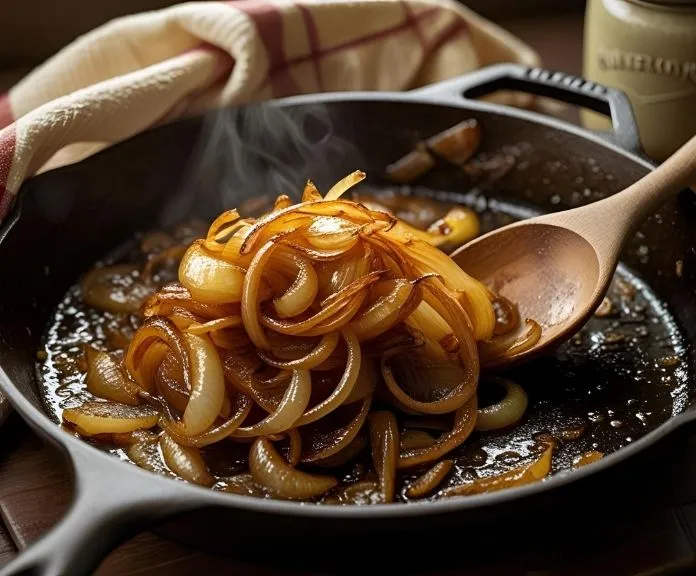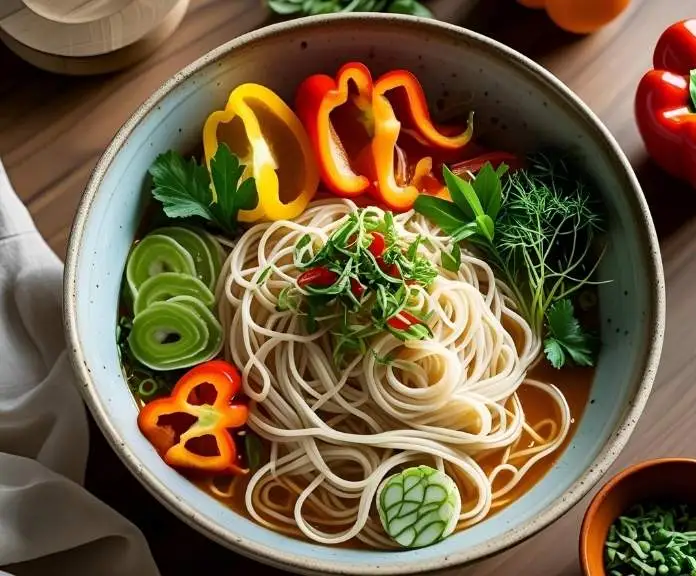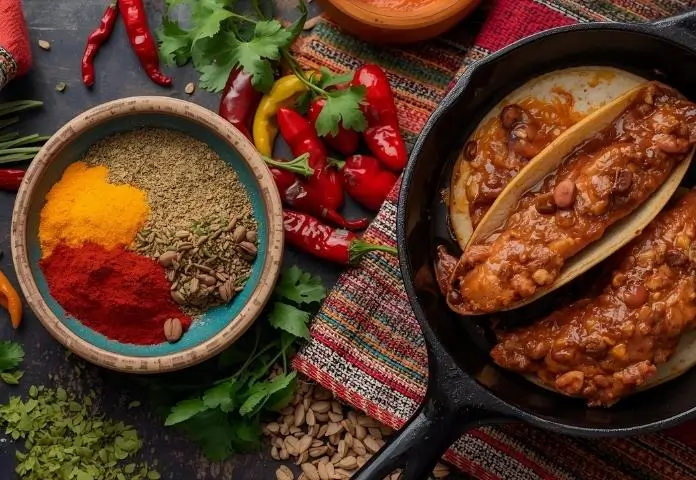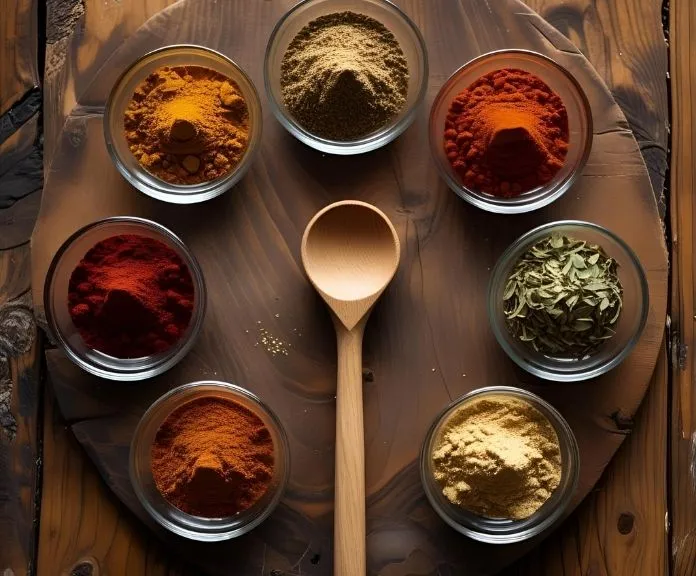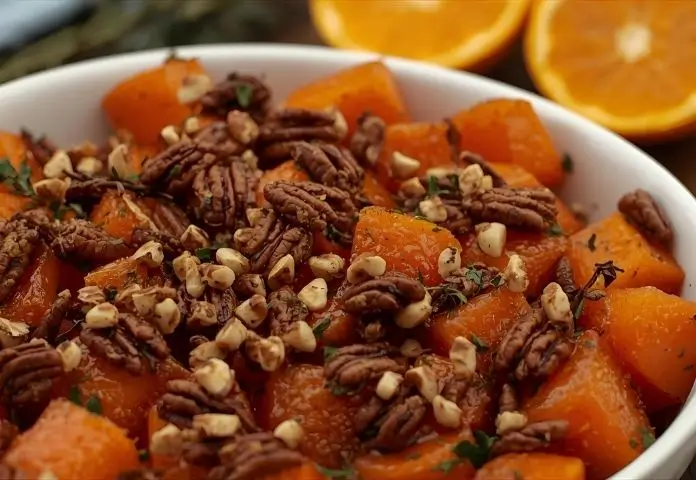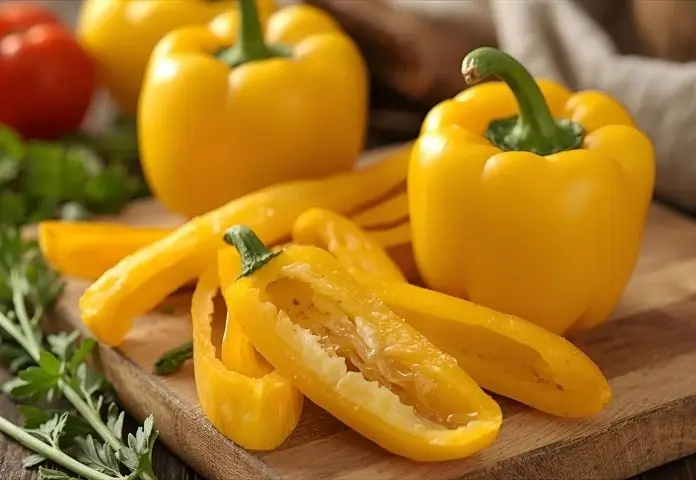How to Cook Tennessee Onions (Just Like Grandma Made)
Soul of Tennessee Onions: Why This Recipe Different
There are onions, and then there are Tennessee onions—a dish that lies so deeply in the Southern tradition that it looks like a baking blasphemy. This is not just another caramelized onion recipe; it is a slow dance of fat, sugar, and patience, which is full in an iron pan.
So does the authentic Tennessee separate onions from those copycats? Three holy columns: right onion, right fat, and right rhythm. Wander from any of these, and you are left with something … Okay, bless your heart.
Vidalia Onions: The Only Acceptable Choice
Let’s address this directly: not all onions are created equal.
Tennessee onions demand Vidalias—golden, sweet Georgia-born bulbs with a sugar content that can also be so high (up to 12%). Their low sulfur level results in a mild flavor, allowing them to be cooked into a sweet, buttery dish.
Science? It is all about enzymatic conversion. When the heat collides with Vidalias, their natural sugars (fructose, glucose) break down into deep, more complex caramelized notes. Using a standard yellow onion, and you will experience a sharp flavor instead of that signature southern sweetness.
Grandma’s rule? “If you do not tear while cutting it, it is not sweet enough.”
Butter vs. Bacon Fat: A Southern Debate
Here the Tennessee kitchen is divided.
The butter team swears by its creamy, walnut-like flavor—untouched, cooled, and served in thick pats that leave the milk brown on a toasted foundation.
The team with Smochanity is arguing that Hog Essence has been presented, which has been presented to give a true soul to the dish. (And let’s be real: a little pork never hurts anyone.)
Decision? Why choose?
Start with butter for your Maillard magic, then finish with a drop of bacon grease for umami heft. Dadi never wrote this cheating code.
Low-and-Slow: The Non-Negotiable Rule
You cannot do perfection.
Tennessee onions aren’t sautéed—they’re seduced. A true batch takes at least 45 minutes of low heat, which leads to minimum stirring. Why? Your answer is because caramelization is not a race but rather a delicate chemical dance.
The Maillard reaction—alchemy where reducing amino acids and sugars makes hundreds of new taste compounds—requires time. If you open the lid frequently, you will create steam that affects the cooking process. will steam them. Stir too much, and you will tear the delicate crust of formation. Should you test a supporter before proceeding? an.
Should you test a supporter before proceeding? A single wooden spoon stands upright in the pan—straight for 20 minutes.
The Forbidden Shortcuts (And Why They Fail)
- High heat will be heartbreaking.
Cranking the burner does not speed up things; it will scorch the sugars before they deepen. Low flame or bust. - East-sided onions are sacred
Those stores and courses dried up. Freshly chopped Vidalias are enough to cry over. - Sugar added very quickly = burnt regrets
If you are adding brown sugar (controversial, but do something), wait for the last 10 minutes. Otherwise, it will become carbonized and taste bitter.
Grandma’s Cast-Iron Method: Step-by-Step
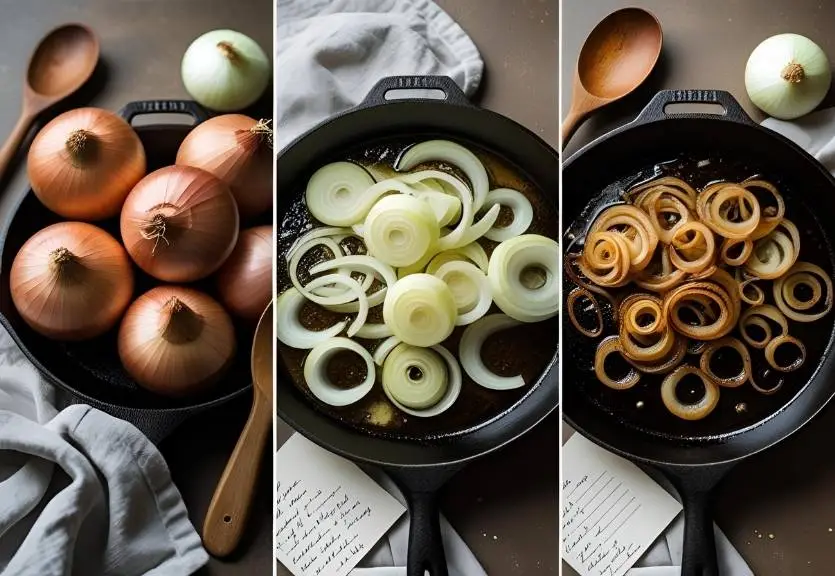
The classic is a rhythm for cooking Tennessee onions—a rhythm passed through the cast-covered skillets and well-worn wooden spoon generations. This is not just a recipe; it is a test of restraint, a meditation in patience, and a love letter for the southern kitchen where the time moves slow and the taste moves deep.
Forget fancy techniques. Here, the magic method is the way you slice, the order you lay the layers, and most importantly, the discipline to leave the same onion alone.
The Perfect Slice (¼-Inch or Bust)
Let’s talk about structural integrity.
Very thin (⅛ inch)? Your onion will quickly dissolve into a sad, smooth puddle. Very thick (½-inch)? They revolt against caramelization, crunching crisp like any onion-themed betrayal at the center.
The Goldilocks zone? ¼-inch.
This is the sweet space—enough to catch its shape through long boils, thin enough to melt in silk. And no, damage it as a form of punishment (intention of punishment). Hand-blessing is non-parasitical. Why? Uneven edges create more surface area, which results in a deeper taste.
Pro tip? Angle your knife as if you are slicing through layers of prejudice. Cut the colors diagonally to achieve the most texture.
Layering Flavors: Fat, Salt, Time
This is not for cooking. This taste is architecture.
Step 1: Render fat like a vigilance
- Cold pan. Cold butter. No cheating.
- Why? Because by starting the cold, buttermilk gradually becomes brown, and the foundation of a walnut is constructed before onion.
Step 2: Onion Avalanche
- Dump them at once. No timid spraying.
- Salt immediately—not only for spices, but also to jump to remove moisture and break.
Step 3: Waiting Game
- Do not touch for at least 10 minutes.
- This is where the trust comes in. Tennessee onions need recession even before sweating, sighing, and slipping.
Grandma says? “If you are stirring, you are not hearing.”
When to stir (spoiler: almost never)
Senseless people ruin everything.
You will sense the request. Onions will whisper, “Stir me …” Ignore them. They are lying.
Rules:
- What should you do in the first 15 minutes? Stay away. Allow the bottom layer to develop a golden crust.
- First movement? The first movement should be a single, confident flip, akin to flipping a pancake with military precision.
- after this? Disturb them as little as possible—we’re talking two, maybe three stirs max during the whole cook.
Why? Stirring causes the onions to steam. And boiled onions are sad onions.
Action bursting:
- “Come away. Seriously. Set a timer and deport yourself.”
- “Think of it like a soufflé—too much, and it will fall into anger.”
3 Mistakes That Ruin Tennessee Onions
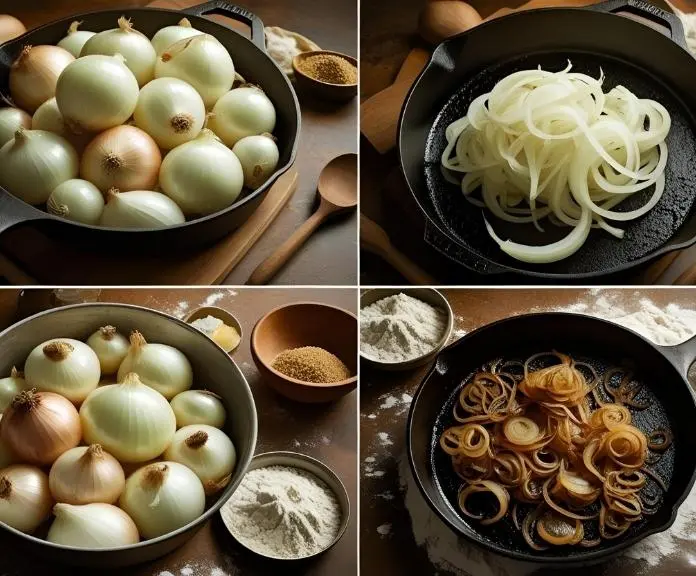
Let’s get one thing directly—provision is not difficult to make with Tennessee onions. But they are easy to waste.
This dish relies on microscopic alchemy, where a single ingredient can transform silk into mud, carbel into carbel, and your grandmother’s legacy can become a cautionary tale.
There are three unforgivable sins here—and how to avoid them like a proper Southern cook.
Skillet congestion (steam = tragedy)
Onions require space. Honor that.
If there is too much rum in the pan, the onions will steam in their own juice instead of caramelizing, resulting in a sad, disgusting texture.
Why It Happens:
- When there is no room for evaporation, moisture accumulates, causing the onions to boil rather than brown.
- The uneven distribution of heat causes some onions to burn while others remain raw.
Fix:
- Work in batches when needed. (Yes, it is annoying. Do anyway.)
- Cast iron is your friend—its heat retention helps, but still, leave the breath room.
Grandma’s wisdom? “If your Tennessee Onions are touching more than a slow-dancing couple, you’ve gone too far.”
Chinese very quickly (burn bitter)
Here is the cold, difficult truth: Chinese is a traitor.
If you add it at the beginning, it will burn the onion before it has a chance to soften, resulting in a bitter, sharp flavor instead of the desired deep sweetness.
Screw the science behind it:
- Sugar caramelizes at 340°F (171°C)—heating faster than onions.
- Burned sugar = bitter compound (hello, pungent aftertaste).
The Right Way:
- Wait for the last 10 minutes—when the onion is already golden and jammy.
- Mix with a splash of liquid (water, bourbon, or vinegar) to prevent scorching.
Pro tip? “If you don’t add it to a rox on high heat, don’t add it here.”
Impatience (The Cardinal Sin)
No. Just no.
Tennessee onion demands reverence for time. If you rush the onions, they will have a raw crunch instead of the desired silkiness, and you will see yellow defects instead of the expected deep bronze color.
Symptoms of Impatience:
- Frequently, stirring results in a lack of flavor, both internally and externally.
- Crank heat → scorched externally, raw inside.
- Leave the rest. The onion requires 5 minutes of off-heat to melt.
Treatment:
- Set a timer. Go away, seriously.
- The race is being won less and more slowly. (This is not a stir. Work accordingly.)
Last warning? “If you cannot leave within an hour, please prepare a different dish. These are not fast-food onions.”
Service of ideas beyond expected
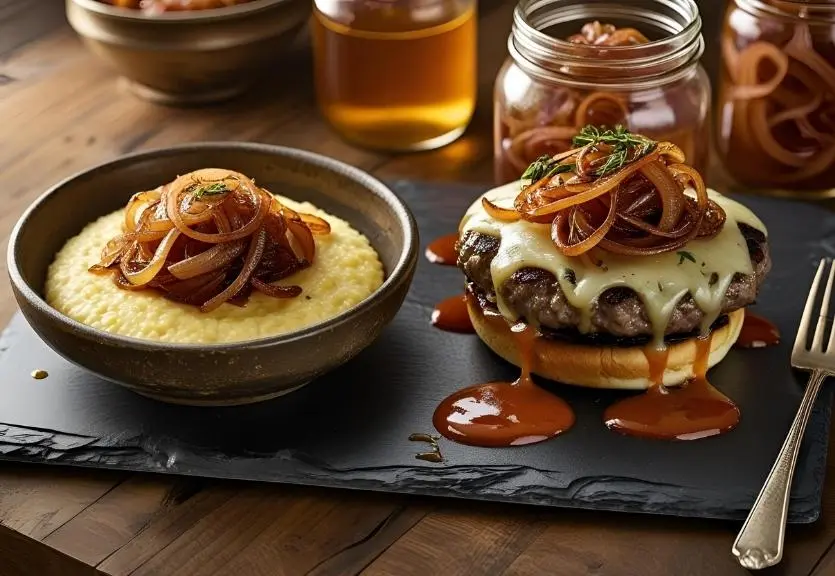
Let’s shatter the casserole dish roof. Southern smothered onions are not only side-to-side—they are missing secret weapons of your kitchen. These caramelized strands of southern alchemy, Jamie, can transform ordinary dishes into luxurious ones with just one strategic dollop.
Now let me show you how to turn these onions into your secret culinary artillery.
Pimento cheese grits (textured war)
This isn’t cooking—it’s a calculated strike against blandness.
The creamy-sharp punch of the pimento cheese grits meets the slow silk of a smooth onion in a battle where everyone wins. The grits serve as a blank canvas. Tennessee Onions? Taste artillery.
Science of Stack:
- Temperature contrast: Melt the hot onion cheese slightly, making taste pockets.
- Texture Interplay: Creamy Grits vs. Toothsome Onion = Mouthful Fireworks.
Pro move? Fold some onion into grits, then crown the bowl with more. Double trouble.
Burger Topper (Juice Apocalypse Warning)
Leave all the napkins for those who enter here.
There is not a burger meal with southern smooth onion—this is an extreme game. Tennessee onions serve two purposes: they act as flavor anarchists and structural rebels. They’ll slip between burger and bun with seditious intent, unleashing a flavor flood with every bite that’ll have you leaning forward like a sinner at a revival.
Why does it work?
- Fat on fat: Butter from onion binds with beef drippings for overloading.
- Sweet-Savory Sabotage: Onions cut through prosperity like a Pak palate cleanser.
fair warning? Wear dark pants. Bend forward. Hug the chaos.
Apple with a splash of cider vinegar
Acid chaperon is fat; it is not required.
Don’t dismiss the vinegar as decoration—it’s performing crucial culinary alchemy. The acetic acid of vinegar breaks fat molecules and tastes from your tongue so that you can taste them again.
10-Word Science:
“The acid binds fat receptors, resetting between cutting its palate.”
How to use it? *Off heat, 1 teaspoon maximum before serving. Any more and you are picking pickles, not increasing.*
Why This Recipe Is an Heirloom: Old-Fashioned Tennessee Onions
Some dishes are tampered with. Other? They are sacred.
Old-fashioned Tennessee onions are not just in your kitchen—they are a living heirloom, which passes through generations such as raw iron and hard-wagon knowledge. This is not just food; it is a tether to the past, a dish that carries the old finger marks from your own.
So why does this recipe oppose modernization? Let’s dig into gambling—and why people play with it.
Modern Twists Grandma Would Side-Eye
“Swap butter for avocado oil? Bless your heart.”
Let’s clarify: There are some updates that need to be made. Other? Blasphemy
Prohibited “improvement”
- Avocado oil instead of butter → lacks milk for the depth of that walnut.
- Air Fire “caramelized” Tennessee onions → a crime against low and slow tradition.
- Pre-minced garlic from a jar → “Nobody has time for him” is not an excuse.
A twist that can pass muster
- A splash of bourbon dropping into the pan (but only when you also give a sip to the grandmother).
Nostalgia Factor (Formica Tables and Stories)
This dish smells like memory.
The scent of onions softening in butter? It’s the same aroma that clung to:
- The midnight snack was printed after the church’s potluck.
- Summer kitchen with fans fighting losing battles.
- That Formica table, sticky with sweet tea rings and powdered with biscuit flour—that’s where these onions belong.
Why is it different
- Taste and smell are time machines. A bite can rewind for decades.
- Shared food carries us forward. Stories mentioned on these onions? This is the real recipe.
For more dishes that taste like nostalgia, check out our recipe—crispy, flaky, and full of ghosts.
Cooking as a legacy (your firsthand)
This pan has history.
Hands that teach you this recipe? He learned with hands with hands. It is:
- Memory of muscles in every movement.
- Silent improvement when you arrive for the wrong onions.
- When you run away, the echo of “this is not, baby.”
How to respect it
Teach someone (inheritance remains only if passed).
Cook it slow (in 1930 the speed was not a property).
Use an ugly dish (sticking enamel = well loved).
You’ll find dozens of takes on Tennessee Onions across cooking. nytimes.

